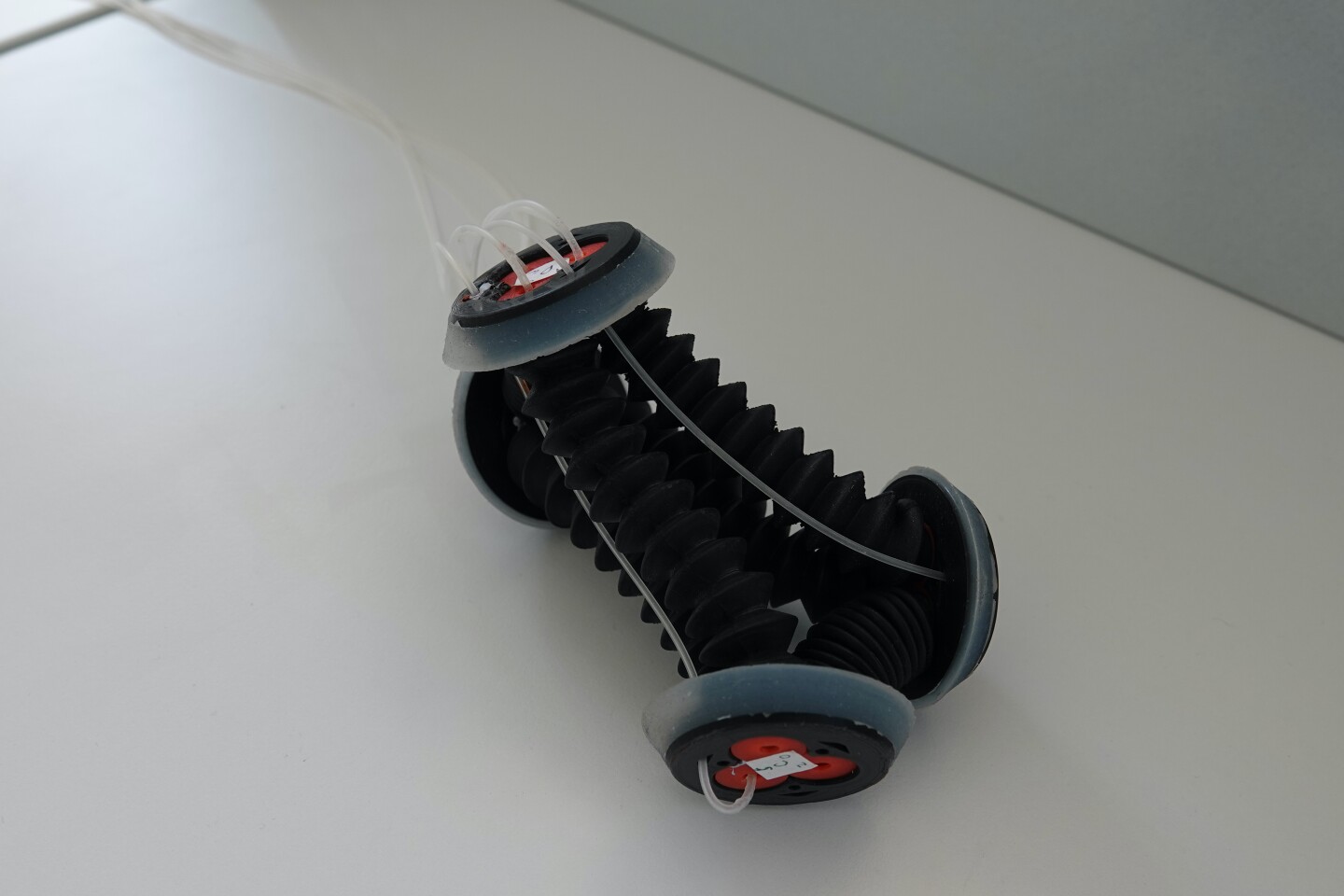If a robot is trying to traverse rugged, irregular terrain, it’s limited by having just one body shape. The Tetraflex robot was designed with this fact in mind, as it can change shape to adopt different modes of locomotion.
Created by scientists at Britain’s University of Bristol, the Tetraflex takes its name from its default tetrahedron (pyramid) shape. Disc-shaped rigid nodes are located at the four corners of the device, and they’re connected to one another via six separate struts. Those struts take the form of airtight rubber bellowed pipes.
By selectively pumping air in or out of individual struts, it’s possible to increase or decrease their length. This functionality allows the robot to switch back and forth between different body shapes, which in turn allows it to move across surfaces in different fashions.
It can roll end-over-end, for example, plus it can crawl like a caterpillar and it can bound in an inchworm-like manner. The robot can even encapsulate a delicate object within its soft, protective struts, then carry that object by crawling while holding onto it. Additionally, by stretching forward, the bot can pass through gaps that would otherwise be too narrow for it to manage.

Peter Wharton
The researchers now plan on developing machine learning algorithms which will allow the robot to come up with additional shape-changes for accomplishing a wider variety of tasks. It is hoped that descendants of the Tetraflex may ultimately find use in applications such as searching for survivors at disaster sites, inspecting oil rigs, or possibly even exploring the surface of other planets.
“The most exciting aspect of this study for me is the versatility of Tetraflex and how we might be able to use these robots to explore challenging terrain and achieve tasks in areas humans cannot access,” said the lead scientist, Dr. Peter Wharton. “The multiple gaits available to Tetraflex and object transport capability show this versatility well.”
You can see the robot in action, in the video below.
Source: University of Bristol




